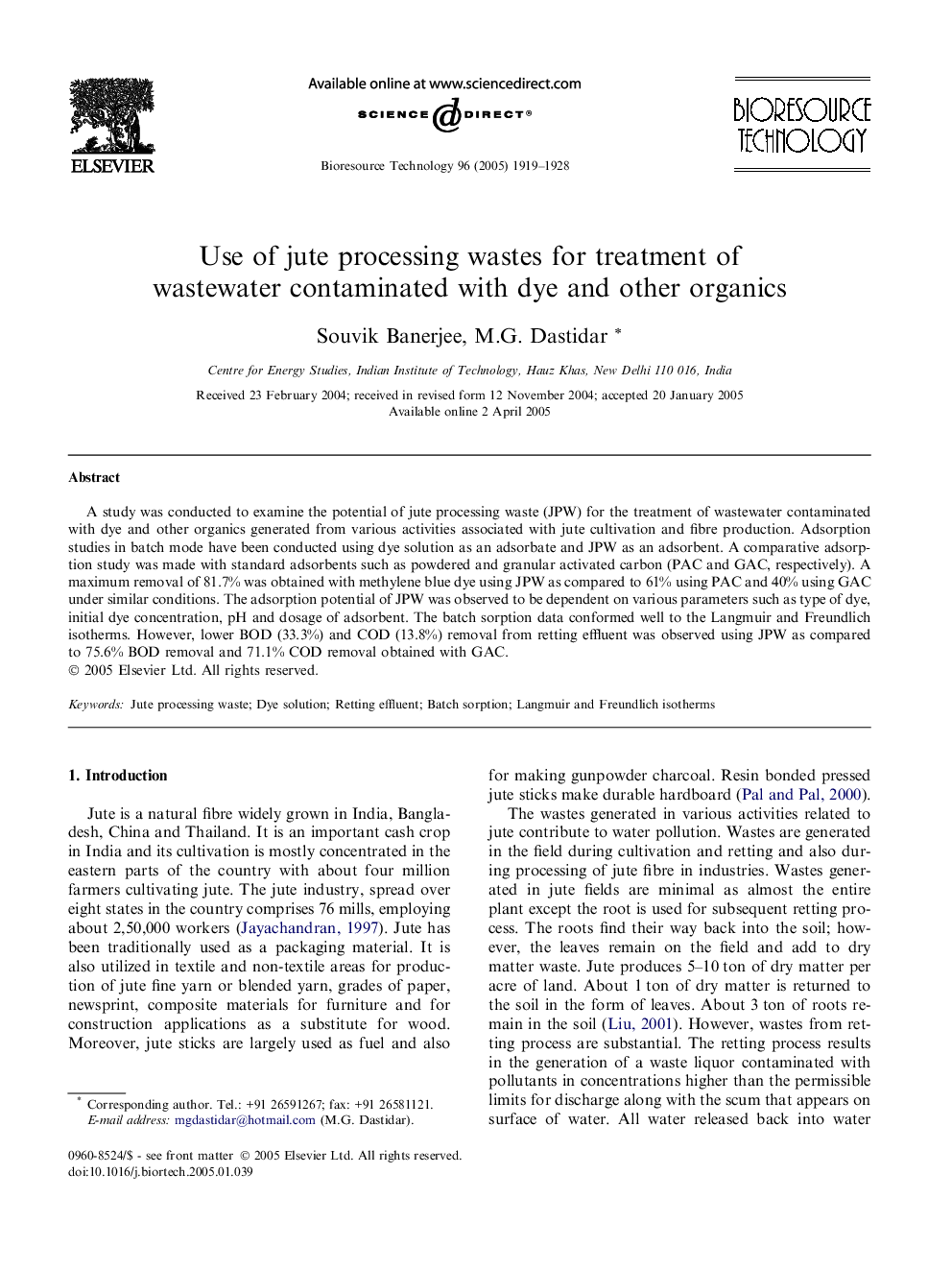| Article ID | Journal | Published Year | Pages | File Type |
|---|---|---|---|---|
| 10395971 | Bioresource Technology | 2005 | 10 Pages |
Abstract
A study was conducted to examine the potential of jute processing waste (JPW) for the treatment of wastewater contaminated with dye and other organics generated from various activities associated with jute cultivation and fibre production. Adsorption studies in batch mode have been conducted using dye solution as an adsorbate and JPW as an adsorbent. A comparative adsorption study was made with standard adsorbents such as powdered and granular activated carbon (PAC and GAC, respectively). A maximum removal of 81.7% was obtained with methylene blue dye using JPW as compared to 61% using PAC and 40% using GAC under similar conditions. The adsorption potential of JPW was observed to be dependent on various parameters such as type of dye, initial dye concentration, pH and dosage of adsorbent. The batch sorption data conformed well to the Langmuir and Freundlich isotherms. However, lower BOD (33.3%) and COD (13.8%) removal from retting effluent was observed using JPW as compared to 75.6% BOD removal and 71.1% COD removal obtained with GAC.
Related Topics
Physical Sciences and Engineering
Chemical Engineering
Process Chemistry and Technology
Authors
Souvik Banerjee, M.G. Dastidar,
